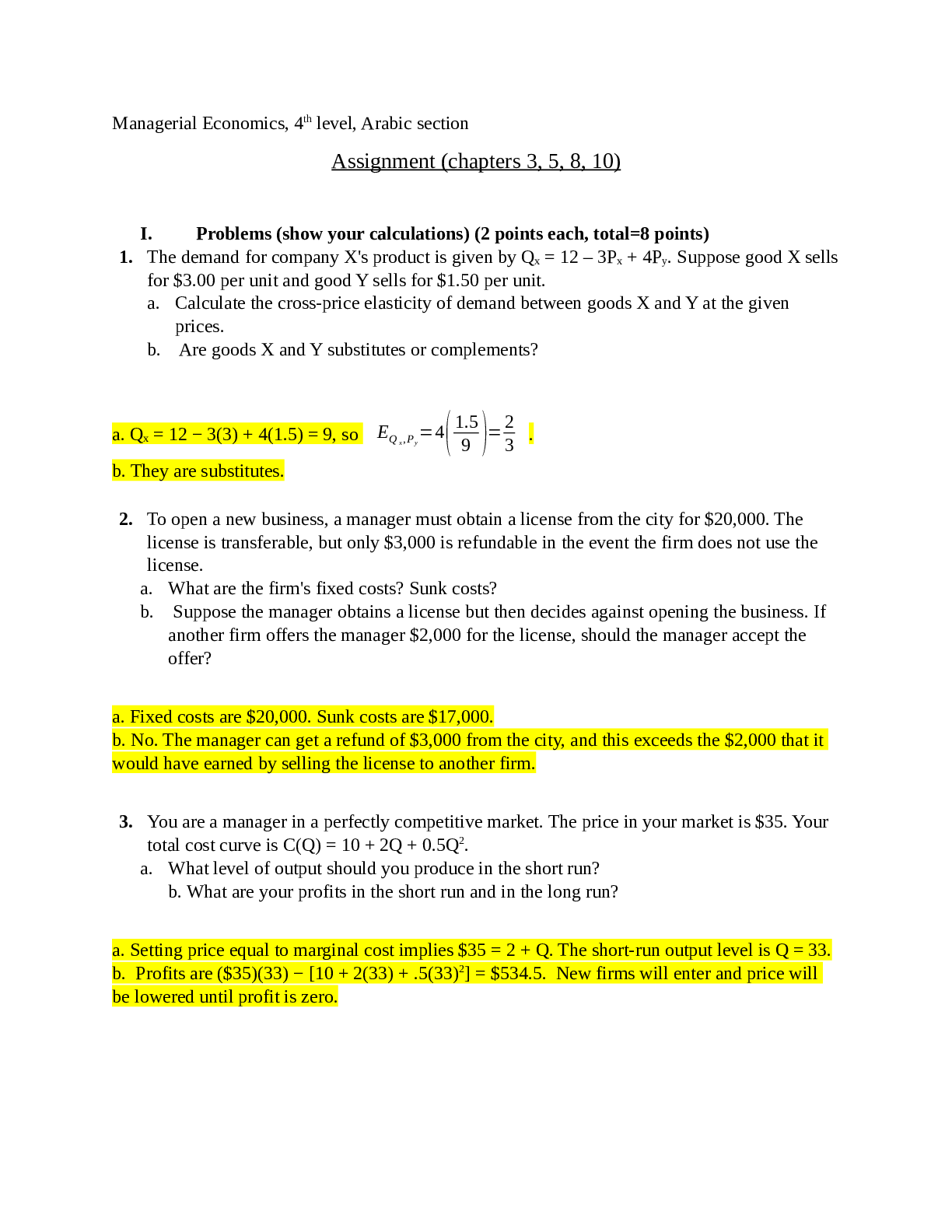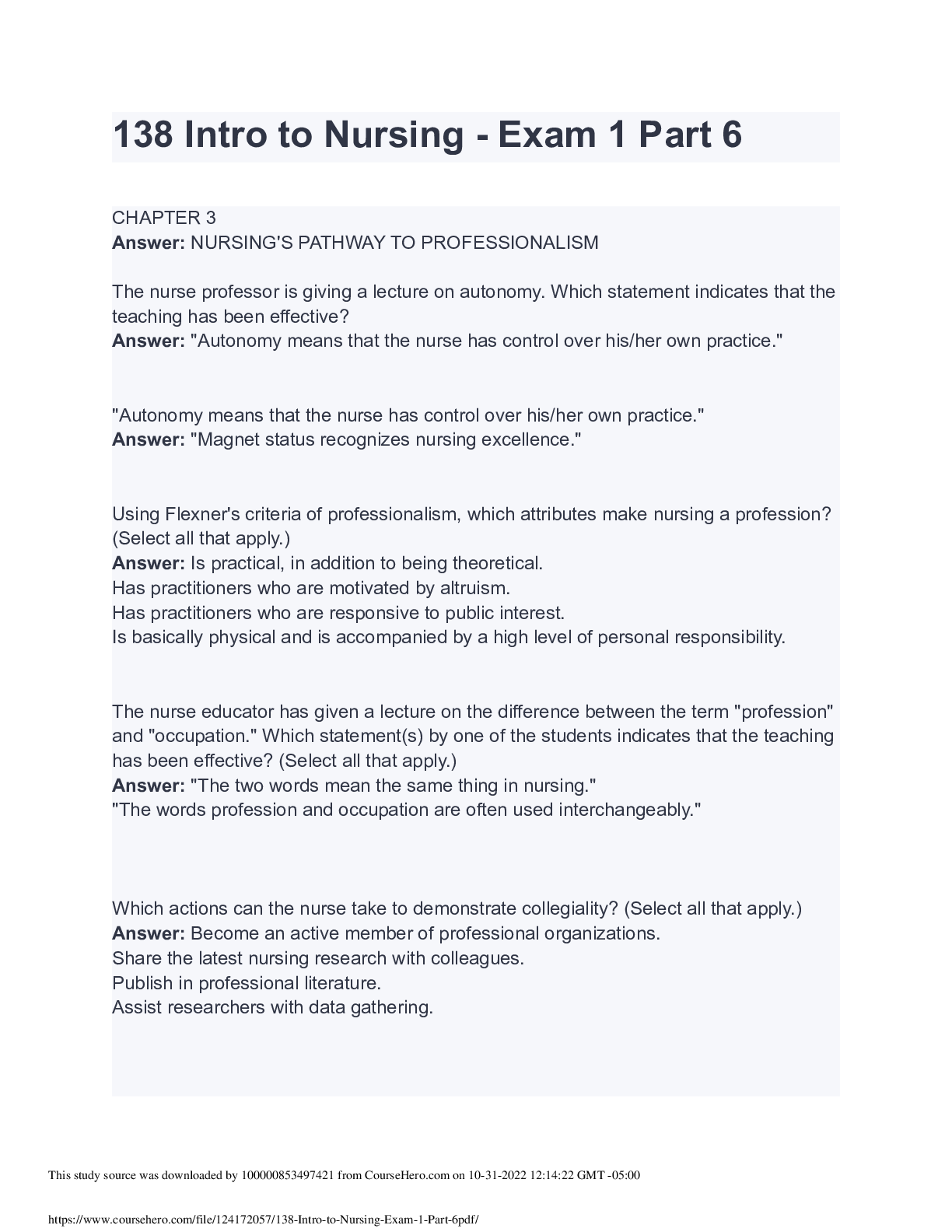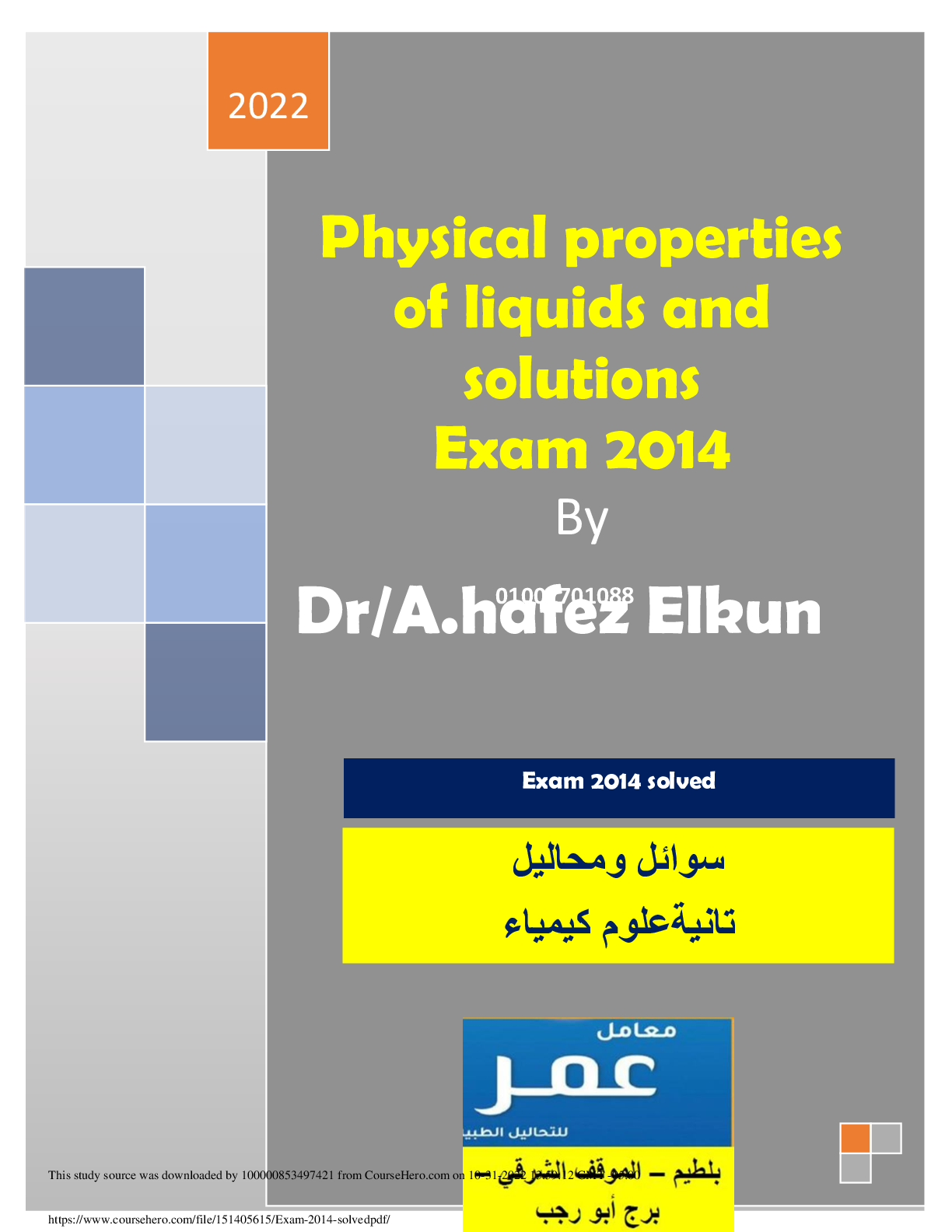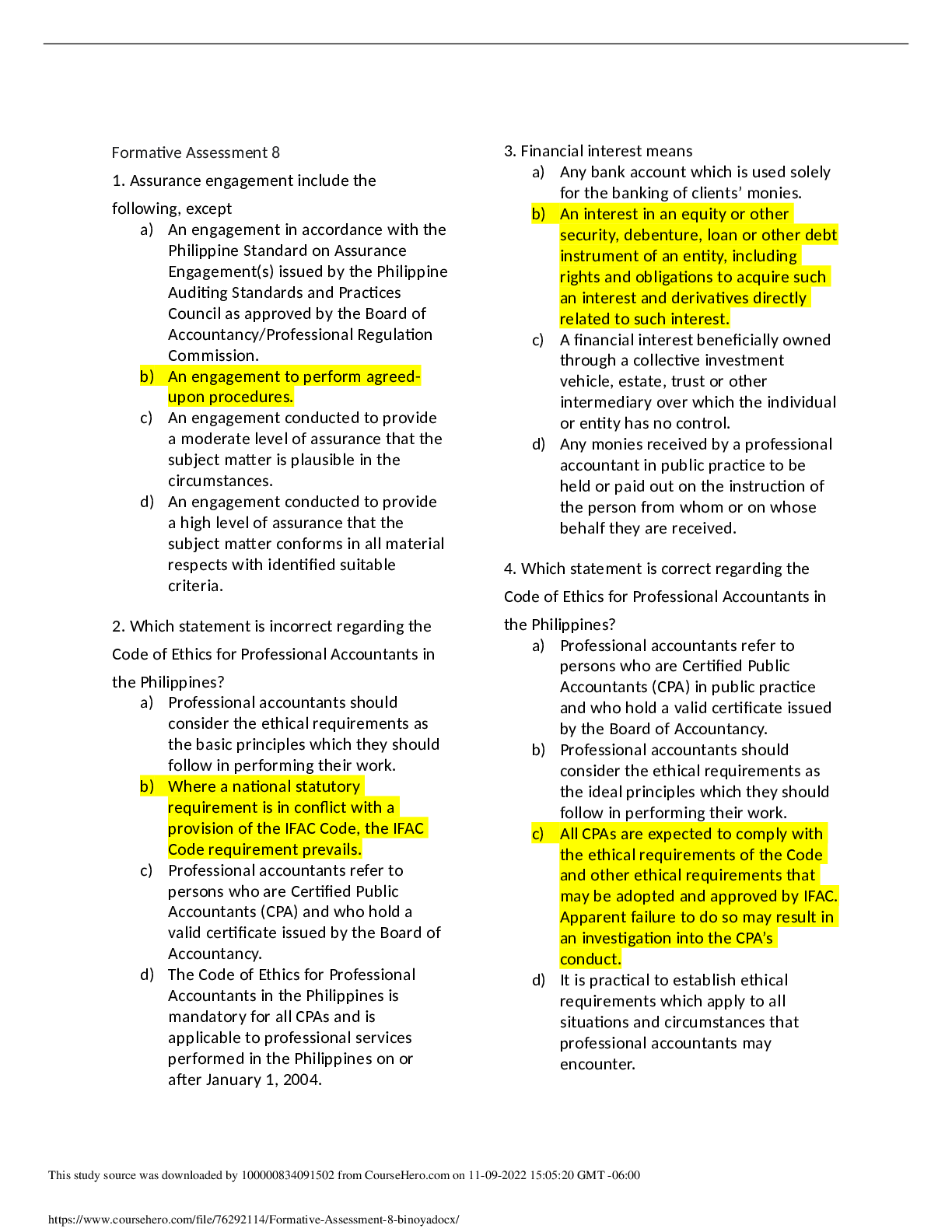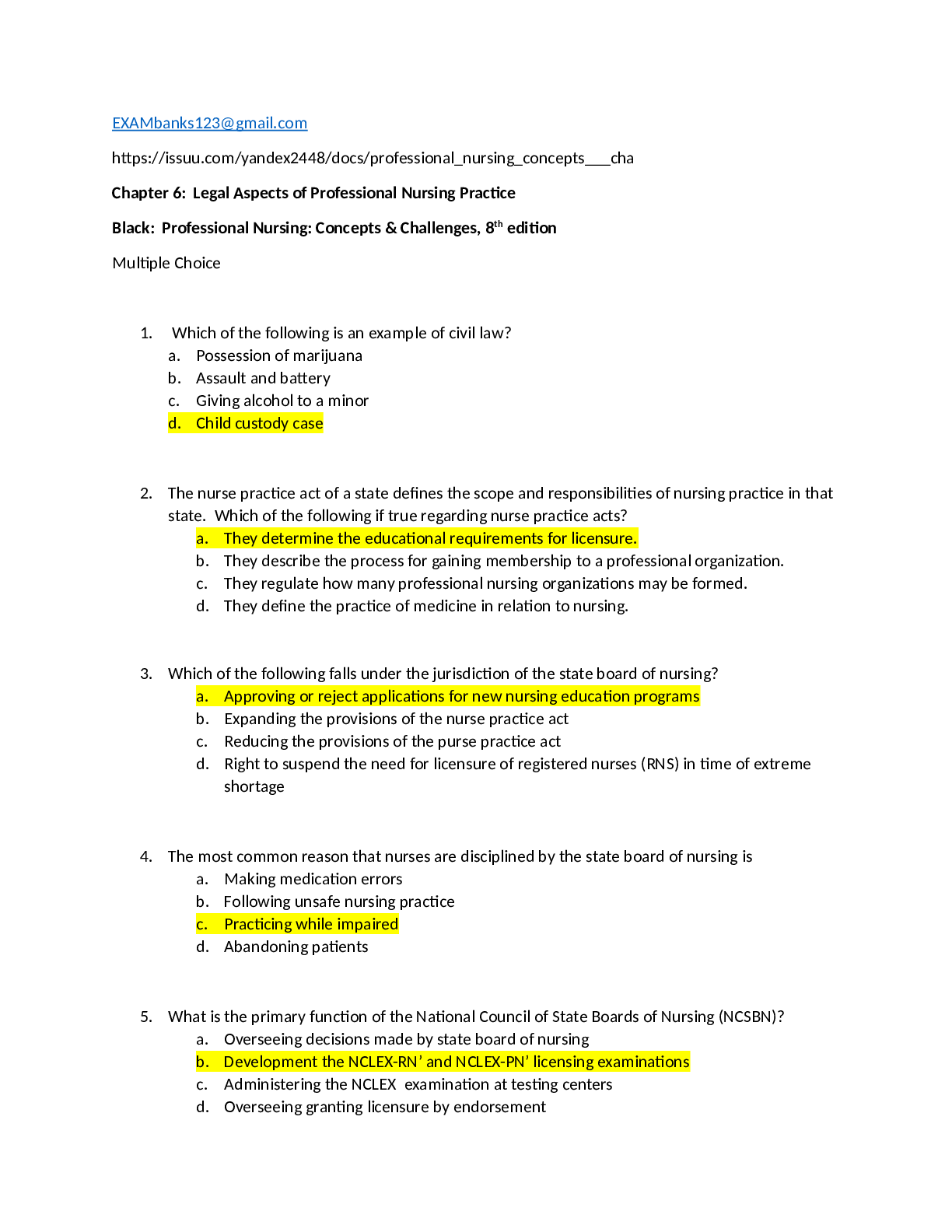AFRICAN CUSTOMARY LAW > QUESTIONS & ANSWERS > IND2601 May/June 2011 AFRICAN CUSTOMARY LAW | Download for quality grades | (All)
IND2601 May/June 2011 AFRICAN CUSTOMARY LAW | Download for quality grades |
Document Content and Description Below
QUESTION 1 A. ● Customary public law governs the relations between traditional authorities and subjects, and the relations between these authorities and subjects within the tribe: Discuss the sub... division of Customary Public Law. (10) Give 2 marks for any of the five points below. Customary public law governs the relations between traditional authorities and subjects, and the relations between these authorities within the tribe. Customary public law may be subdivided as follows: ● Indigenous constitutional and administrative law, this is that part of customary law which relates to the composition, powers and functions of the public organs of authority. In the case of a tribe the highest authority is the tribal chief, and in the case of a kingdom it is the king. The tribal chief has various councils that help him to perform his duties. A tribe is usually subdivided into several (territorial) wards. Each ward is headed by a headman, assisted by a system of councils. In former times, the tribal chief, together with his councils, had the power to legislate. The chief-incouncil had to see to it that these laws and (other community rules) were applied. The chief and each headman had a court in which cases were tried. the administration of justice legal systems also have officials specially charged with administering justice, but the public takes an active part in the proceedings, which always take place in the open. The public freely takes part in the cross-examination and the discussion of the case and forms part of the court procedure. Also, negotiations for extrajudicial (ie, outside the court) settlement take place between the family groups concerned, and not between individuals The tribal chief is, for instance, not only law-maker and executive official, but also judge-in-chief. The views of the people present in court, and not previous decisions, lead to a judgment, because the people in court interpret the public sense of justice. ● The indigenous adjudicatory organs and the law of procedure. This is that part of customary law that deals with the composition and jurisdiction of the various indigenous or customary courts and the various procedures that must be followed when cases are brought before the court and tried, and when judgment is executed. It also relates to the evidence that may be lead in court in order to reach a decision. ● Indigenous criminal law (which is discussed in study unit 5). This is that part of the law that deals with public action against a subject with the purpose of punishing the subject when he transgresses a rule that is punishable by law. B. Name and describe the factors that promote the observance of customary law. (10) (Allocate marks as indicated below to any five of the six factors) [Show More]
Last updated: 2 years ago
Preview 1 out of 17 pages
.png)
Buy this document to get the full access instantly
Instant Download Access after purchase
Buy NowInstant download
We Accept:

Reviews( 0 )
$10.00
Can't find what you want? Try our AI powered Search
Document information
Connected school, study & course
About the document
Uploaded On
Mar 14, 2023
Number of pages
17
Written in
Additional information
This document has been written for:
Uploaded
Mar 14, 2023
Downloads
0
Views
101

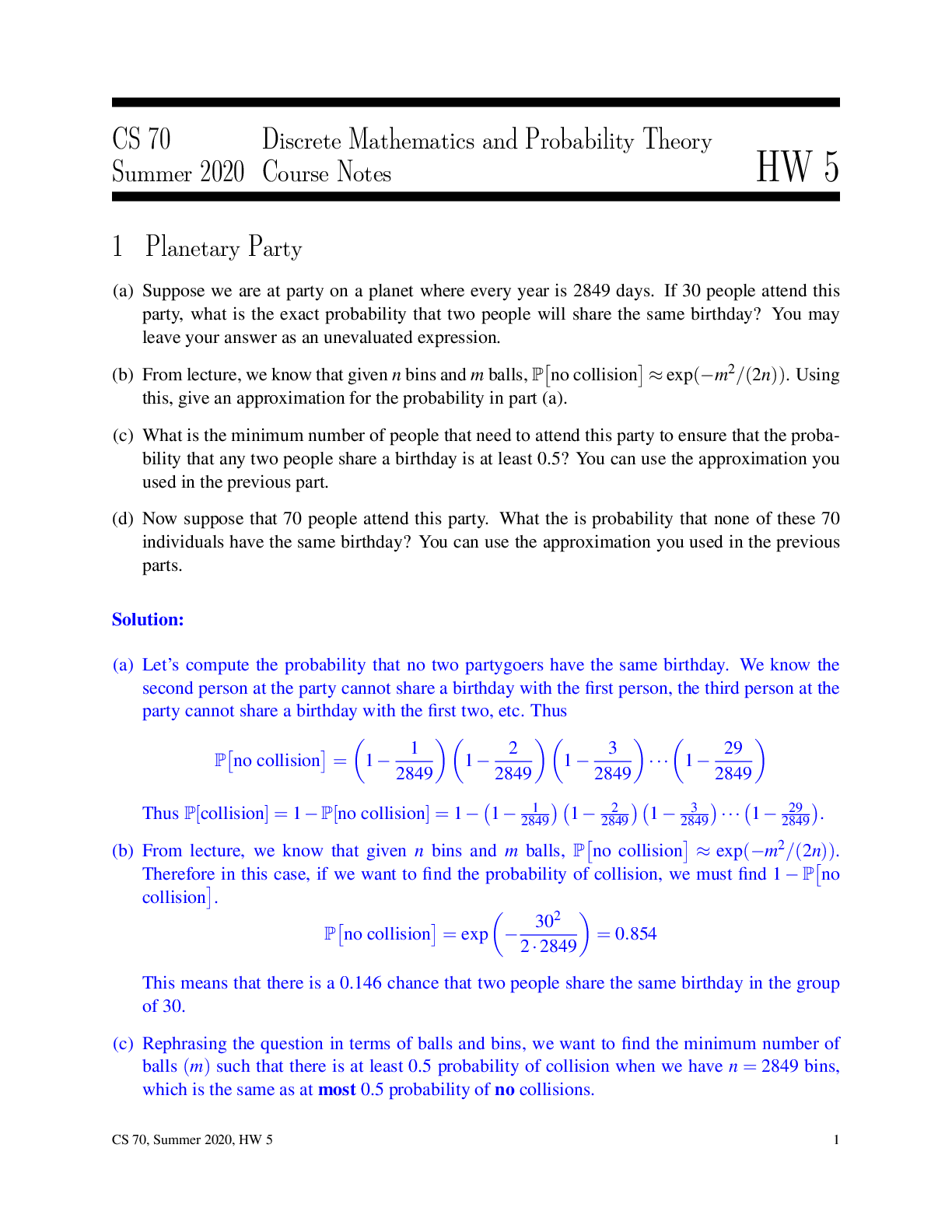

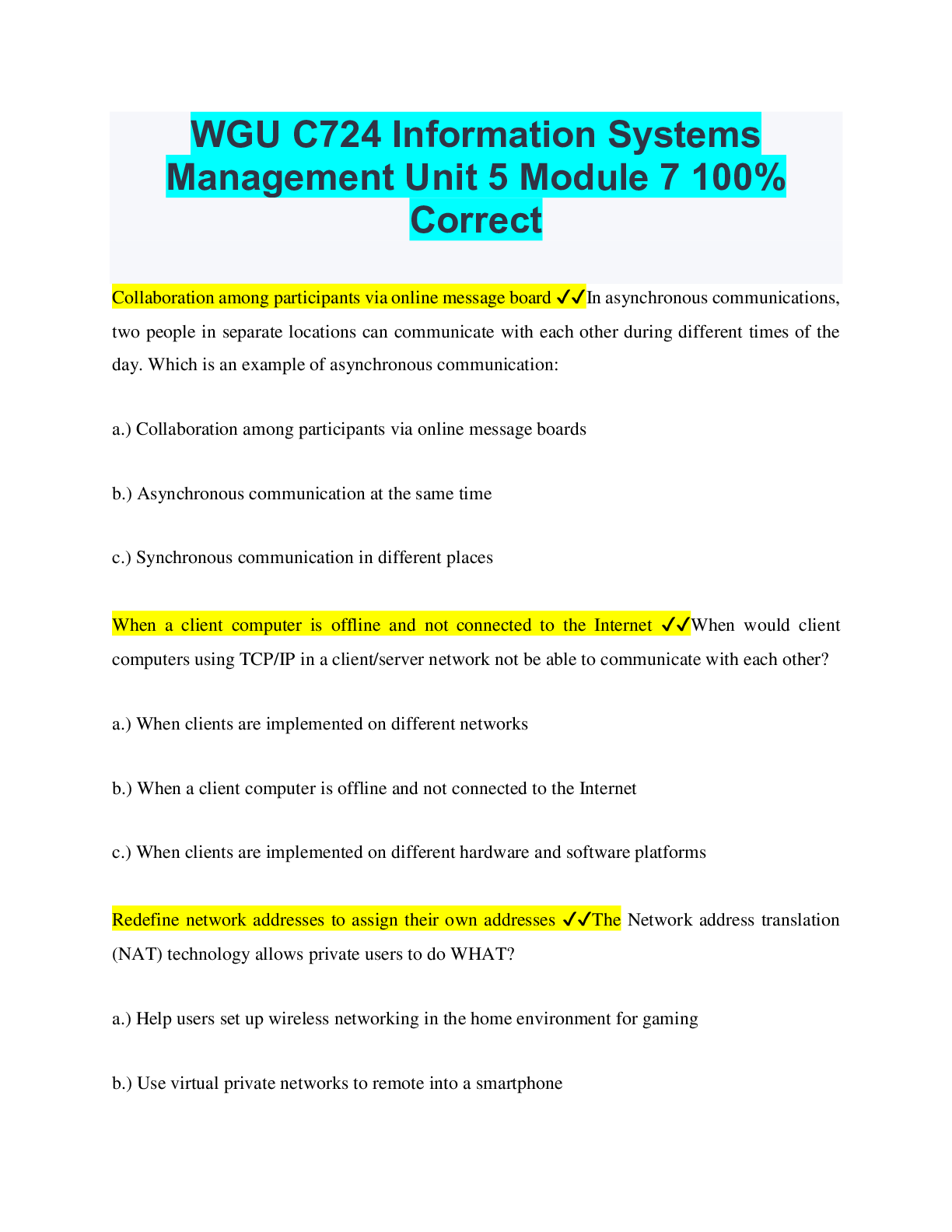
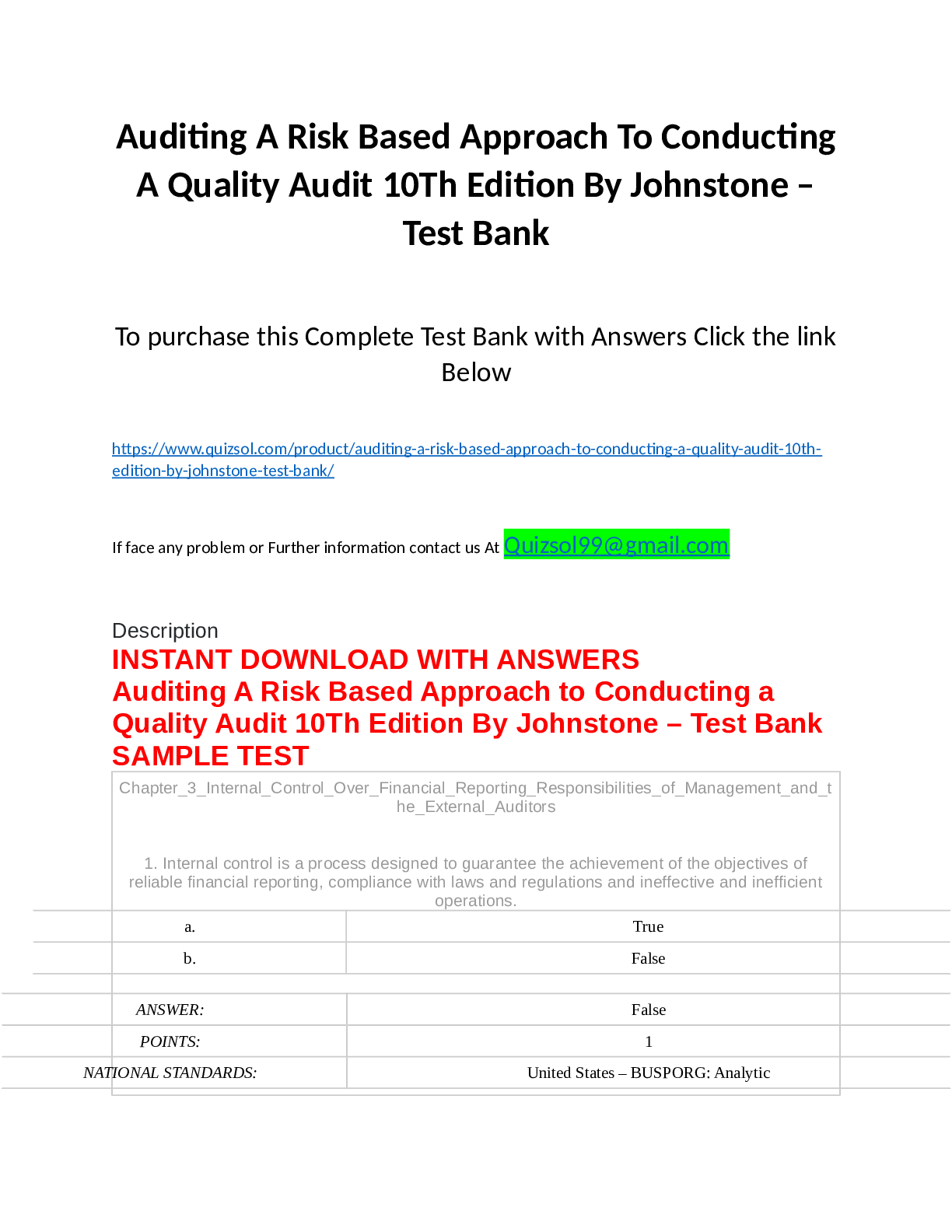
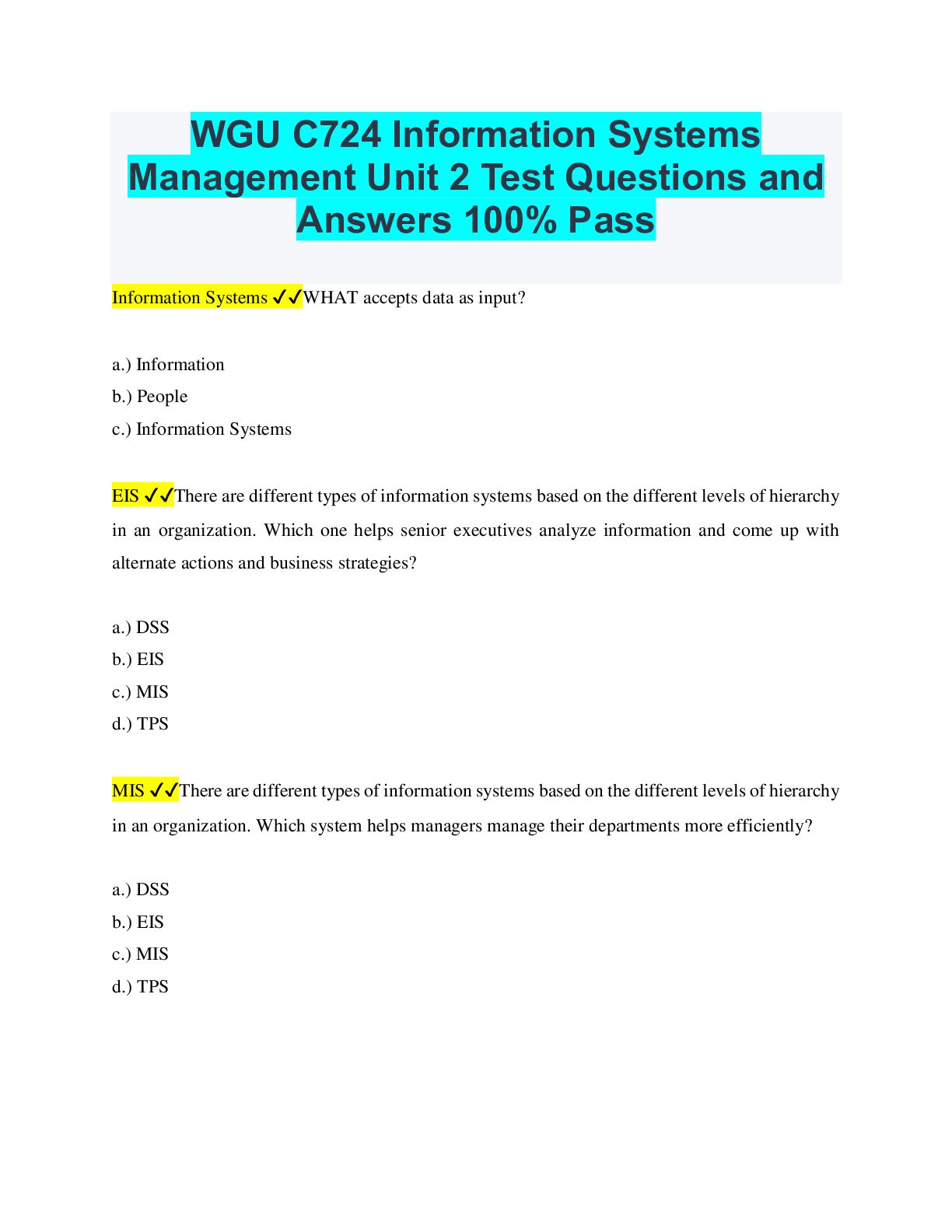
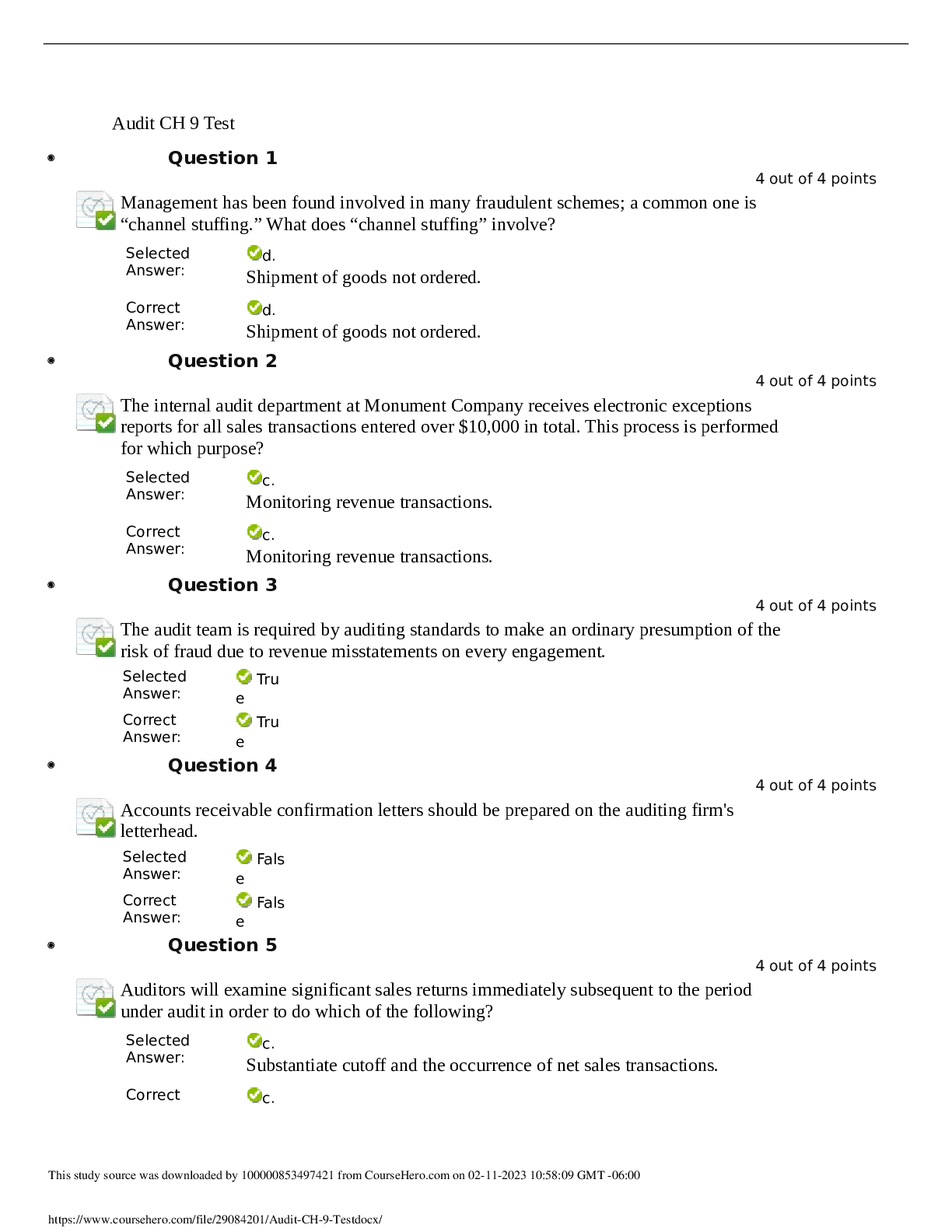
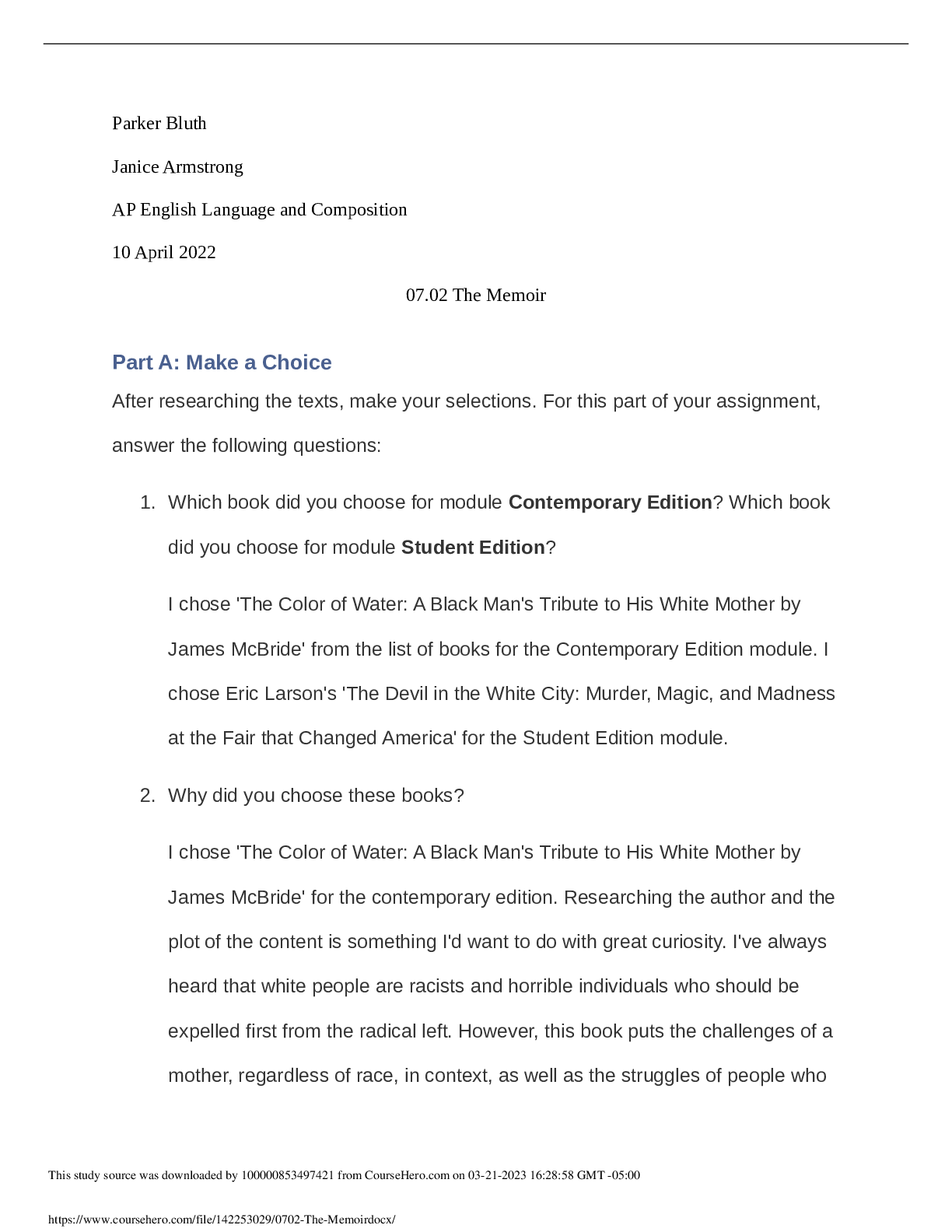
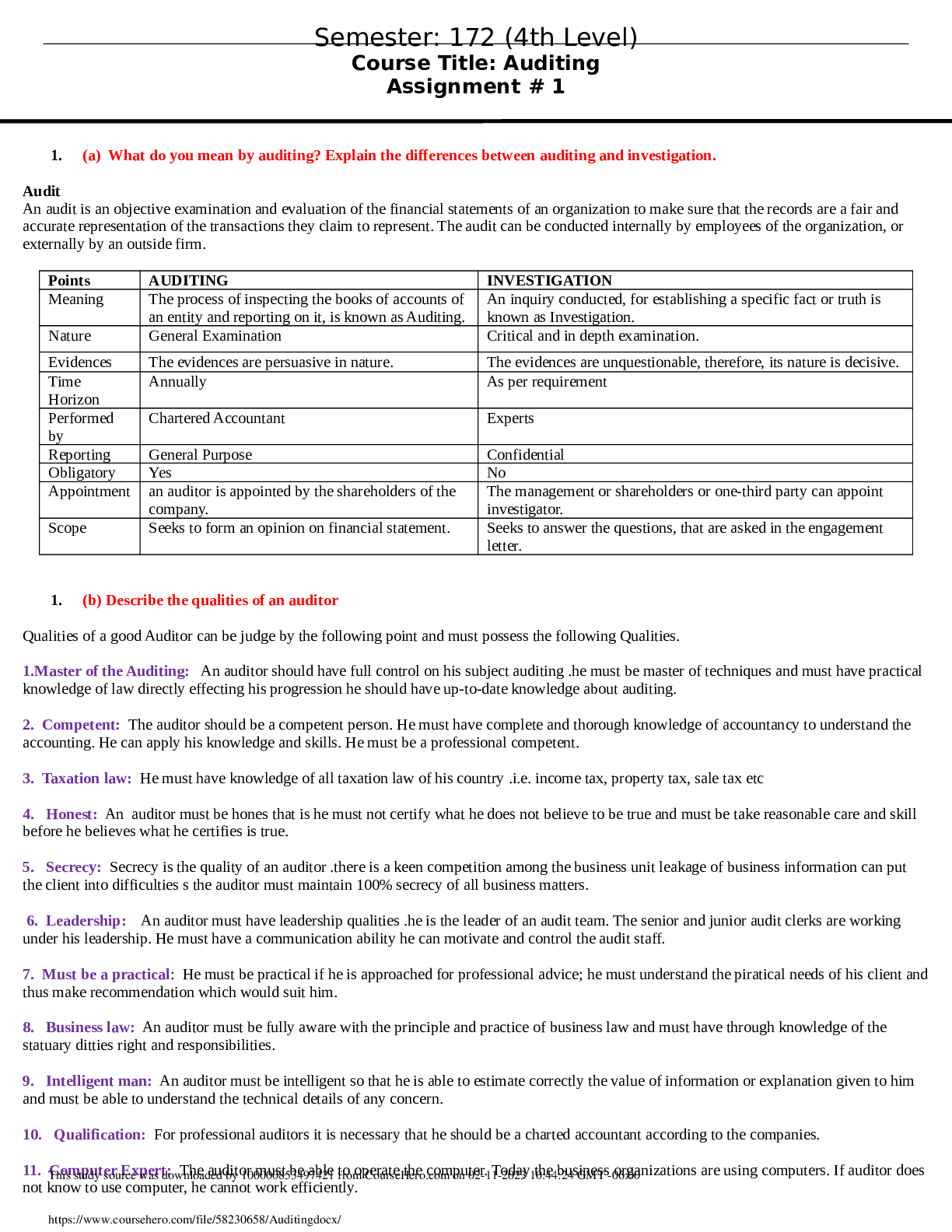
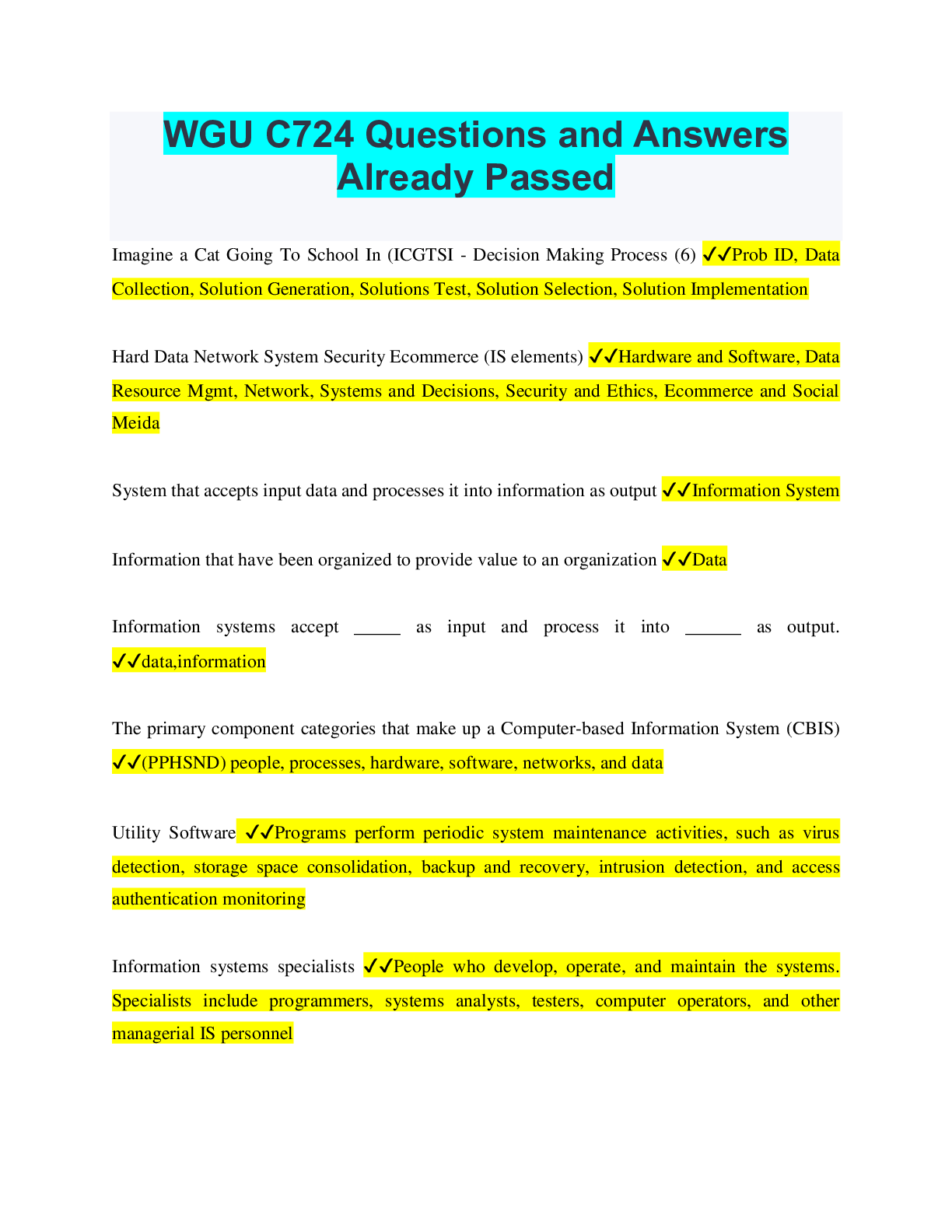

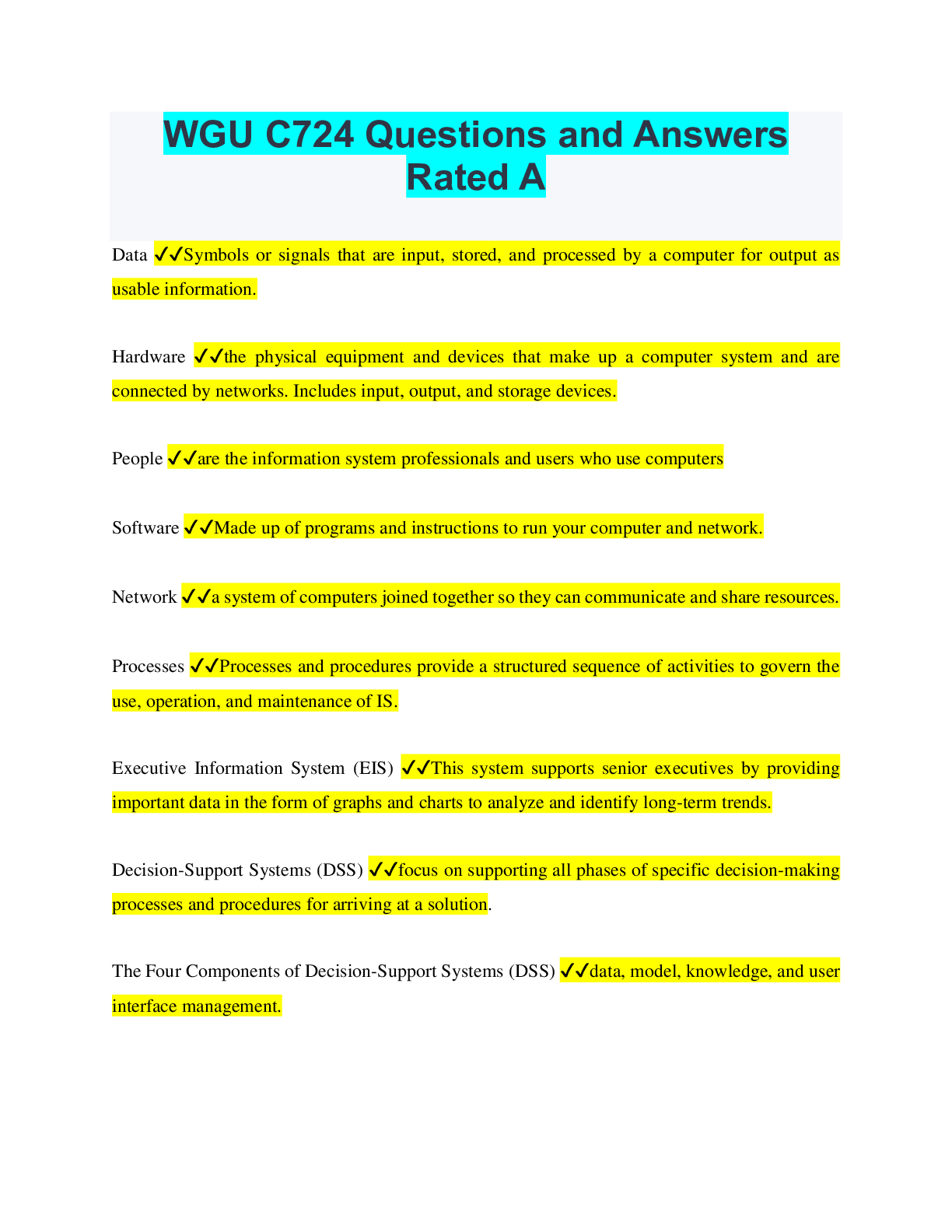
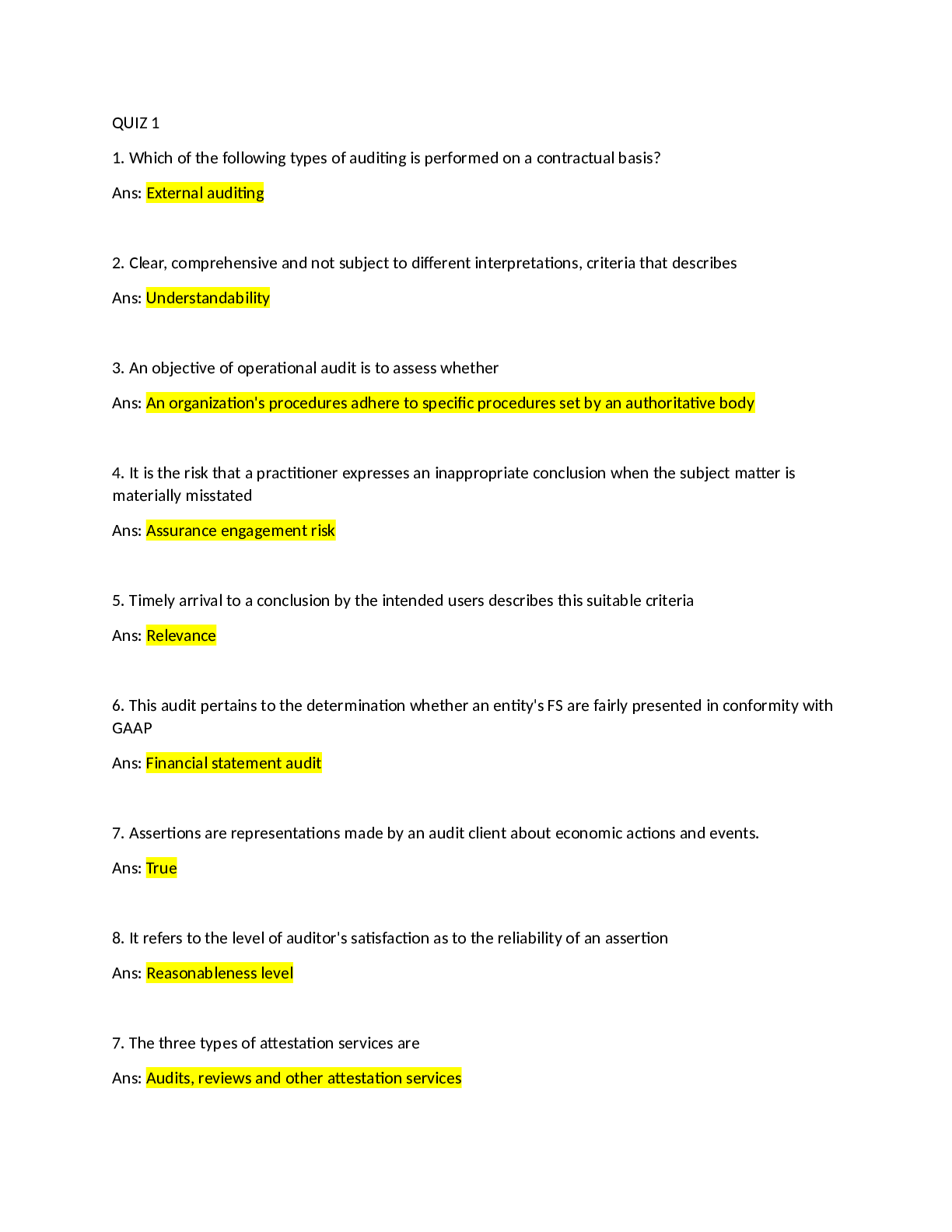
.png)
